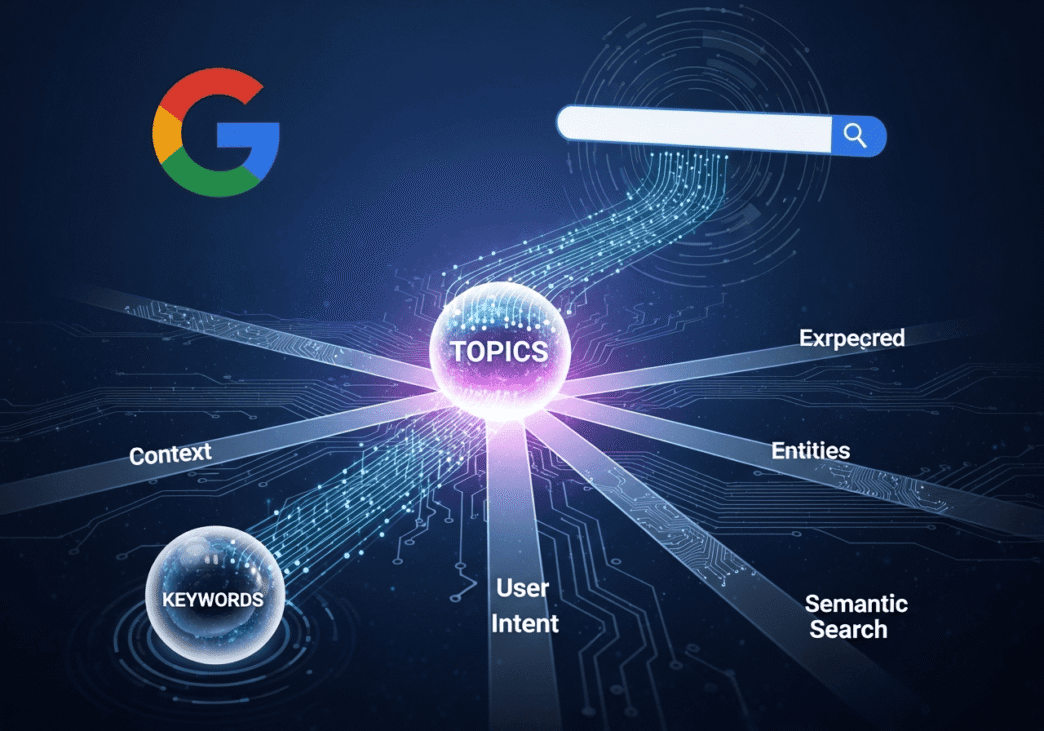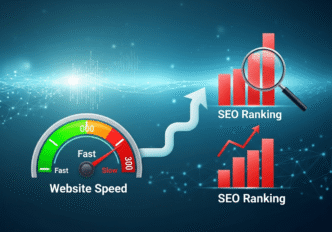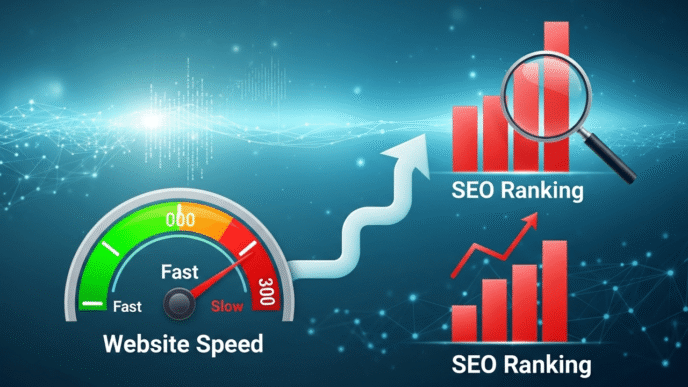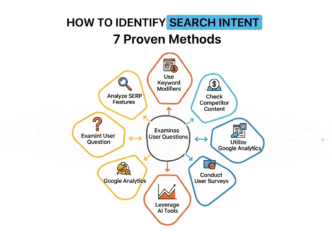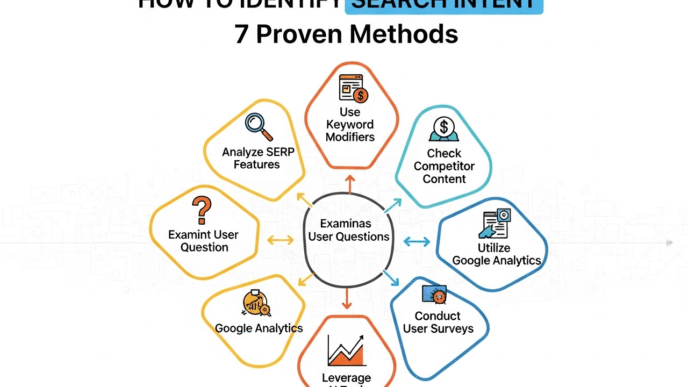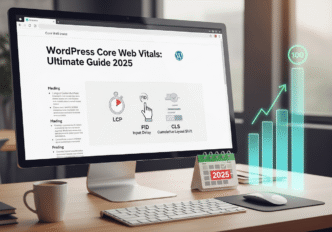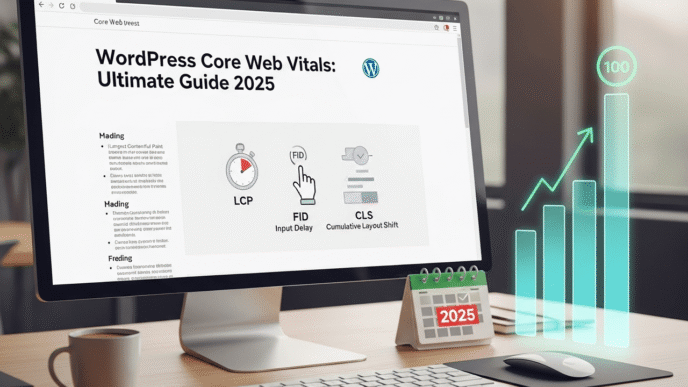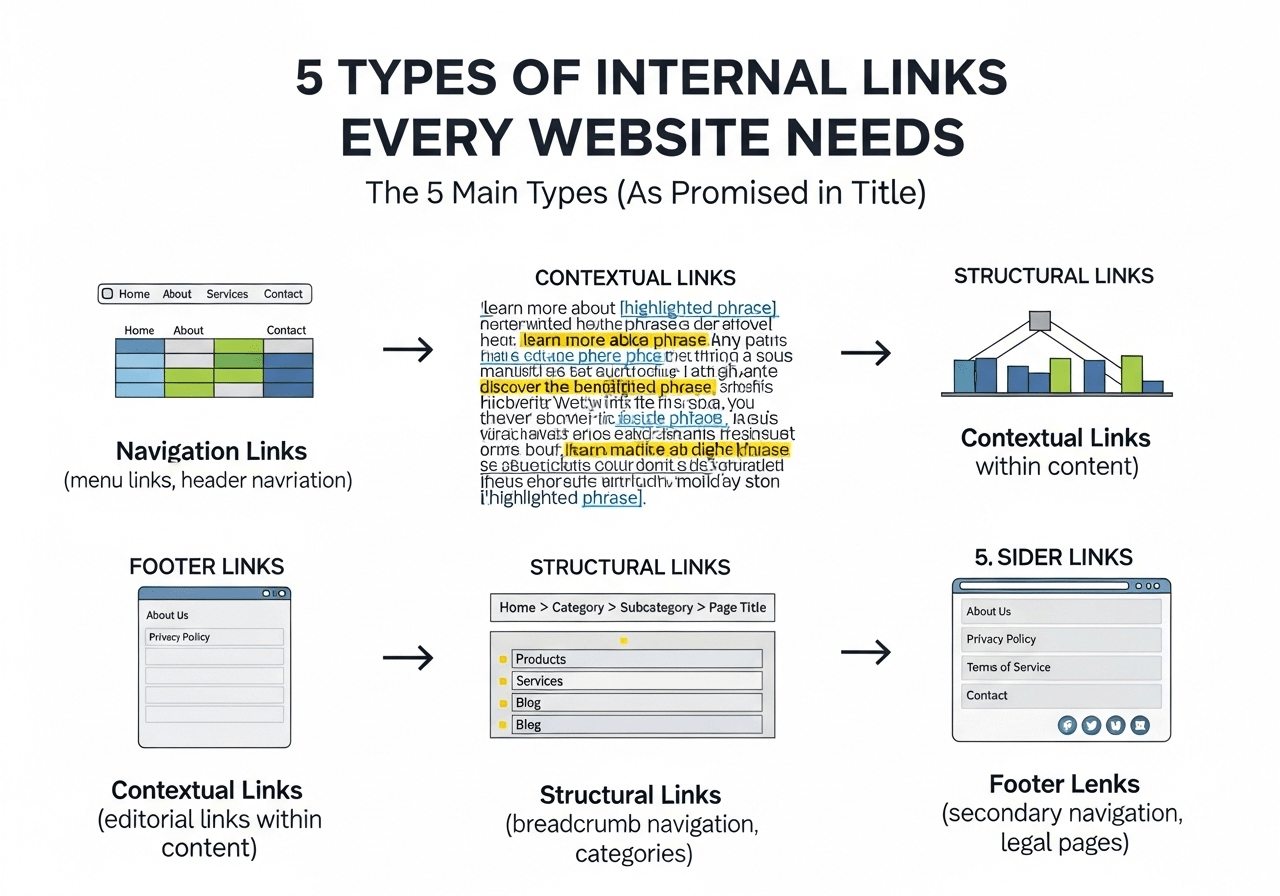Remember when stuffing “cheap red shoes” fifteen times into a 300-word article could actually get you ranked? Those days are as dead as flip phones and dial-up internet. If you’re still approaching SEO like it’s 2010, you’re essentially bringing a typewriter to a smartphone convention.
Welcome to the era of semantic SEO—where Google has evolved from a simple keyword-matching robot into something that actually understands what you’re talking about. Instead of just counting how many times you mention “pizza,” Google now knows the difference between pizza recipes, pizza restaurants, and pizza delivery services. Mind-blowing, right?
This comprehensive guide covers everything you need to know about semantic search optimization, from foundational concepts to advanced implementation strategies that will transform your content approach in 2025 and beyond.
Table of Contents
Toggle
📚 What You’ll Learn in This Complete Semantic SEO Guide
This content covers the entire semantic SEO landscape:
- Foundations: Understanding semantic search vs traditional keyword optimization
- Evolution: How Google’s algorithms transformed from Hummingbird to MUM
- Implementation: Step-by-step strategies for topic cluster creation
- AI Integration: Optimizing for AI Overviews and voice search
- Tools & Tactics: Complete toolkit for semantic optimization
- Measurement: Tracking and improving semantic SEO performance
- Future Trends: Preparing for the next wave of search evolution
💡 Related Topic Clusters: This pillar page connects to our comprehensive content series on modern SEO strategies, including [Topic Cluster Strategy], [Entity-Based SEO], [Content Optimization], and [AI Search Optimization].
What Exactly Is Semantic SEO?
Semantic SEO is the practice of optimizing content around topics, user intent, and meaning rather than just individual keywords. Think of it as the difference between a parrot repeating words and a human having an actual conversation.
Traditional SEO was like playing word bingo. You’d pick a keyword and sprinkle it everywhere like seasoning on bland food. Semantic search optimization changes the game entirely—it’s about understanding the relationships between concepts, entities, and user intentions.
At its core, semantic SEO recognizes that when someone searches for “apple,” they might want:
- Information about the fruit
- Apple Inc. stock prices
- Apple pie recipes
- Apple computer troubleshooting
Google’s algorithms now use natural language processing and machine learning to figure out which “apple” you actually mean.
How Did Google’s Understanding of Content Evolve?
Google’s journey from keyword-counter to context-genius didn’t happen overnight. It was more like watching a toddler learn to speak—lots of gibberish before the breakthrough moments.
The Pre-Semantic Dark Ages
Back in the early 2000s, Google was pretty dumb (relatively speaking). It looked for exact keyword matches and counted backlinks. If you wanted to rank for “best pizza NYC,” you literally had to repeat that exact phrase until readers’ eyes bled.
The Hummingbird Revolution (2013)
Google’s Hummingbird algorithm update was the first major step toward semantic search. Suddenly, Google started understanding conversational queries and search intent better.
BERT Changes Everything (2019)
BERT (Bidirectional Encoder Representations from Transformers) taught Google to understand context like never before. It could finally grasp that “bank” means something different in “river bank” versus “savings bank.”
MUM: The Current Champion (2021)
MUM (Multitask Unified Model) is Google’s current powerhouse. It understands information across 75 languages and can connect concepts that would make your high school English teacher proud.
Pro Tip: “Google’s evolution toward semantic understanding means we need to think like researchers, not keyword robots. Focus on comprehensive topic coverage rather than keyword density.” – Rand Fishkin, SparkToro
Why Traditional Keyword Stuffing No Longer Works
If you’re still cramming keywords like you’re packing for a vacation you’ll never take, you’re actually hurting your rankings. Here’s why:
Google Penalties Are Real
Keyword stuffing penalties can tank your rankings faster than a lead balloon. Google’s algorithms are sophisticated enough to detect unnatural keyword usage patterns.
User Experience Suffers
Nobody wants to read content that sounds like it was written by a malfunctioning robot. When your content quality suffers, so do your engagement metrics—and Google notices.
Search Intent Misalignment
Focusing solely on keywords often means missing the actual user intent behind searches. You might rank for the keyword but fail to satisfy the searcher’s needs.
| Traditional SEO Approach | Modern Semantic SEO Approach |
|---|---|
| Keyword density focus | Topic authority building |
| Exact match targeting | Entity-based optimization |
| Single-page optimization | Content cluster strategy |
| Mechanical writing | Natural language content |
| Backlink quantity | Relevance and context |
What Does Google Actually Look for in Modern Content?
Google’s ranking factors have evolved beyond simple keyword matching. Here’s what actually matters now:
Topical Authority and Expertise
Google wants to see that you’re an authority on subjects, not just individual keywords. Topical clusters and comprehensive coverage of related concepts signal expertise.
Entity Recognition and Relationships
Entity SEO focuses on people, places, things, and concepts that Google can identify and understand. When you mention “Tesla,” Google knows whether you mean the car company or the inventor.
Content Depth and Comprehensiveness
Surface-level content doesn’t cut it anymore. Google rewards comprehensive content that thoroughly covers topics from multiple angles.
User Engagement Signals
Dwell time, bounce rate, and click-through rates tell Google whether users find your content valuable. These user experience signals are crucial ranking factors.
How to Implement Semantic SEO Strategies
Ready to join the modern world of SEO? Here’s your roadmap:
Step 1: Research Topics, Not Just Keywords
Instead of starting with keyword tools, begin with topic research. What are the main themes in your industry? What questions do your audience ask?
Use tools like:
- AnswerThePublic for question-based research
- Google’s “People Also Ask” section
- Reddit and Quora for real user questions
Step 2: Create Topic Clusters
Build content clusters around main topics. If your main topic is “content marketing,” create supporting content about:
- Content strategy
- Content optimization
- Content distribution
- Content measurement
Step 3: Use Latent Semantic Indexing (LSI) Keywords
LSI keywords are terms related to your main topic. For “semantic SEO,” related terms include:
- Natural language processing
- Search intent optimization
- Topic modeling
- Entity-based SEO
Step 4: Optimize for Featured Snippets
Featured snippet optimization requires answering questions directly and comprehensively. Structure your content to address specific queries clearly.
Pro Tip: “The best semantic SEO strategy is to become the Wikipedia of your niche. Cover topics so thoroughly that Google has no choice but to see you as the authority.” – Brian Dean, Backlinko
What Are Topic Clusters and Why Do They Matter?
Topic clusters are the backbone of modern semantic SEO strategy. Think of them as content neighborhoods where related articles live together and support each other.
The Hub and Spoke Model
Your pillar content (the hub) covers a broad topic comprehensively. Cluster content (the spokes) dives deep into specific subtopics and links back to the pillar page.
Internal Linking Power
Strategic internal linking between cluster content tells Google about the relationships between your pages. It’s like drawing a map of your expertise.
Authority Building
When you create comprehensive topical coverage, Google recognizes you as an authority in that space. This topical authority can boost rankings across all related content.
Real-World Case Study: HubSpot’s Topic Cluster Success
HubSpot transformed their content strategy using semantic SEO principles with remarkable results.
The Challenge: HubSpot had thousands of blog posts but many were competing against each other for similar keywords.
The Solution: They reorganized content into topic clusters:
- Main pillar: “Content Marketing”
- Cluster content: 15+ supporting articles on specific aspects
- Strategic internal linking connecting all related pieces
The Results:
- 106% increase in organic traffic within 6 months
- Featured snippet captures increased by 300%
- Topical authority improved across all marketing-related searches
The lesson? Comprehensive topic coverage beats scattered keyword targeting every time.
Which Tools Help with Semantic SEO Implementation?
The right tools can accelerate your semantic SEO efforts significantly:
Content Research and Planning Tools
| Tool | Primary Function | Best For |
|---|---|---|
| MarketMuse | Topic modeling and content gaps | Comprehensive content strategy |
| Clearscope | Semantic keyword research | Content optimization |
| Surfer SEO | Content optimization with NLP | On-page semantic optimization |
| Frase | Topic research and content briefs | Content planning |
Entity and Topic Analysis Tools
Google’s Natural Language API can help you understand how Google interprets your content. IBM Watson offers similar natural language processing capabilities.
Internal Linking Tools
Link Whisper and Internal Link Juicer help identify semantic relationships between your content pieces for better internal linking strategies.
How to Measure Semantic SEO Success
Tracking semantic SEO performance requires looking beyond traditional keyword rankings:
Topical Authority Metrics
Monitor how many different related keywords you rank for around core topics. Topic authority growth indicates successful semantic optimization.
Featured Snippet Captures
Track featured snippet wins across topic clusters. These indicate Google recognizes your content as comprehensive and authoritative.
Content Performance Analytics
Organic traffic growth to cluster content collectively shows improved topical relevance.
User Engagement Improvements
Better semantic optimization typically leads to:
- Increased dwell time
- Lower bounce rates
- Higher pages per session
Statistical Insights: The State of Semantic SEO in 2025
The numbers tell a compelling story about how semantic search has transformed SEO:
Current Search Landscape Statistics
91% of SEOs report that optimization positively impacted website performance in 2024, with semantic understanding playing a crucial role in this success.
Pages ranking in the top 10 contain 1,447 words on average, emphasizing the need for comprehensive content that covers topics thoroughly rather than focusing on individual keywords.
AI’s Impact on Semantic Search
The most dramatic shift has been Google’s AI Overviews, which now appear in:
- 50% of all search results (as of March 2025)
- 88% targeting informational queries
- 13% overall search presence according to Semrush’s latest research
AI Overviews experienced a 119% increase in mobile frequency during March 2025 alone, showing rapid adoption of semantic search technologies.
Content Performance Data
📊 Semantic SEO Performance Metrics (2024-2025):
- 80% of voice searches use conversational language
- 89% of marketers prioritize blog content in SEO strategy
- Content with 3000+ words gets 3x more traffic
- 75% of AI Overview citations come from top-12 ranked pages
Over 50% of voice searches will be conversational by 2025, making natural language processing optimization crucial for semantic search success.
What Are the Most Common Semantic SEO Mistakes?
Even experienced SEOs stumble when transitioning to semantic approaches:
Mistake #1: Treating It Like Advanced Keyword Research
Semantic SEO isn’t just finding more keywords—it’s about understanding user intent and topic relationships.
Mistake #2: Ignoring Content Depth
Creating thin content around multiple related keywords won’t work. Google wants comprehensive coverage of topics.
Mistake #3: Neglecting Entity Optimization
Failing to optimize for entities (people, places, brands, concepts) means missing opportunities for semantic connections.
Mistake #4: Poor Internal Linking Strategy
Without strategic internal linking, your topic clusters won’t demonstrate their relationships to Google.
Pro Tip: “The biggest mistake I see is treating semantic SEO as a technical checkbox rather than a fundamental shift in how we think about content. It’s about serving user needs, not gaming algorithms.” – Lily Ray, Path Interactive
How Will Semantic SEO Evolve in the Future?
The future of semantic search is exciting and rapidly evolving:
AI-Powered Content Understanding
Machine learning algorithms will become even better at understanding content context and user intent. Google’s custom Gemini model is already processing complex, multi-step reasoning for search queries.
AI Overviews Dominance
With AI Overviews now appearing in 50% of searches and reaching over 1 billion users monthly, they’re becoming the primary interface between users and information.
Healthcare and education queries are approaching 90% AI Overview coverage, while B2B tech grew from 36% to 70% in just one year.
Voice Search Integration
Voice search optimization relies heavily on semantic understanding since people speak differently than they type. 80% of voice searches are conversational, requiring natural language processing.
Visual Search Enhancement
Visual search will incorporate semantic elements, understanding not just what’s in images but the context around them.
Generative Search Experiences
ChatGPT Search, Perplexity, and other AI search engines are creating new opportunities for semantic visibility beyond traditional Google rankings.
Personalization at Scale
Semantic SEO will enable hyper-personalized content delivery based on individual search intent patterns and contextual understanding.
Trending AI/SEO Integration in 2025
The intersection of AI and semantic SEO is creating unprecedented opportunities:
Generative Engine Optimization (GEO)
65% of businesses report better SEO results because of AI integration. GEO strategies focus on optimizing content for AI-powered search engines like ChatGPT and Claude.
Real-Time Content Adaptation
AI tools can now analyze semantic relationships in real-time, suggesting content improvements that align with search intent.
Cross-Platform Semantic Consistency
Modern semantic SEO requires consistency across traditional search, AI overviews, voice assistants, and conversational AI platforms.
According to Google’s official announcement, AI Overviews help users “visit a greater diversity of websites for help with more complex questions,” showing that semantic optimization actually drives more qualified traffic.
Your Action Plan: Getting Started with Semantic SEO
Ready to modernize your SEO approach? Here’s your step-by-step guide:
Week 1: Audit Current Content
- Identify existing topical clusters in your content
- Map semantic relationships between pages
- Find content gaps in your topic coverage
Week 2: Research Core Topics
- Use topic research tools to identify main themes
- Analyze competitor content strategies
- Plan pillar content and cluster content structure
Week 3: Optimize Existing Content
- Add LSI keywords naturally to current content
- Improve internal linking between related pieces
- Enhance content depth and comprehensive coverage
Week 4: Create New Cluster Content
- Write pillar pages for main topics
- Develop supporting content for subtopics
- Implement strategic internal linking
Final Thoughts: Embracing the Semantic Future
Semantic SEO isn’t just a trend—it’s the fundamental way Google understands and ranks content now. The sooner you embrace topic-based optimization over keyword stuffing, the sooner you’ll see real results.
The Bottom Line
Google’s evolution toward semantic understanding means we need to evolve too. It’s no longer about tricking algorithms—it’s about genuinely serving user needs through comprehensive, contextual content.
The Verdict: Semantic SEO is Now Essential
The data is clear: 91% of SEOs report positive impacts from modern optimization strategies, and AI Overviews appearing in 50% of searches make semantic optimization non-negotiable.
Semantic SEO rewards those who:
- Build topical authority through comprehensive coverage
- Understand and serve user intent
- Create natural, engaging content
- Focus on long-term value over quick wins
- Optimize for AI-powered search experiences
The ROI Reality
Traffic from AI-generated summaries converts better than traditional SERP listings, showing higher trust and intent levels. Businesses adapting to semantic search are seeing:
- Higher conversion rates from AI Overview traffic
- Improved topical authority recognition
- Better long-tail keyword performance
- Increased voice search visibility
The best part? This approach doesn’t just improve your SEO—it makes your content genuinely better for real humans. And in a world where user experience drives everything, that’s the ultimate win-win.
Stop chasing individual keywords like they’re Pokemon cards. Start building semantic authority around topics that matter to your audience. Your rankings—and your readers—will thank you.
Frequently Asked Questions (FAQ)
What is the difference between traditional SEO and semantic SEO?
Traditional SEO focuses on exact keyword matching and density, while semantic SEO emphasizes understanding user intent, topic relationships, and contextual meaning. Semantic search optimization considers the broader topic ecosystem rather than individual keywords.
How do I optimize content for AI Overviews?
Create comprehensive, well-structured content that directly answers user questions. Use entity-based optimization, include relevant LSI keywords, and ensure your content appears in the top 12 search results since 75% of AI Overview citations come from these positions.
Can semantic SEO work for local businesses?
Absolutely! Local semantic SEO involves optimizing for location-based entities and conversational queries like “best pizza restaurant near me.” With 58% of voice searchers using technology to find local businesses, semantic optimization is crucial for local visibility.
How long does it take to see results from semantic SEO?
Semantic SEO typically shows results in 3-6 months for well-executed strategies. However, topical authority building can take 6-12 months to fully establish, especially in competitive niches.
Do I still need to target specific keywords with semantic SEO?
Yes, but the approach changes. Focus on topic clusters around primary keywords while incorporating related entities and semantic keyword variations. The goal is comprehensive topic coverage rather than keyword density.
How does voice search impact semantic SEO strategies?
Voice search optimization requires focusing on conversational queries and natural language patterns. With 80% of voice searches being conversational, optimize for question-based queries and long-tail phrases that match how people speak.
What tools are best for semantic SEO analysis?
Use MarketMuse for topic modeling, Clearscope for semantic keyword research, and Surfer SEO for content optimization. Combine these with Google’s Natural Language API for entity analysis and AnswerThePublic for question-based research.
How do I measure semantic SEO success?
Track topical authority growth, featured snippet captures, AI Overview mentions, and content cluster performance. Monitor increases in related keyword rankings and organic traffic to topic-focused content.
🎯 Semantic SEO Topic Cluster Visualizer
Visualize your content strategy with interactive topic clusters optimized for semantic search
Pillar Content
💡 Digital Marketing Strategy
This cluster focuses on building topical authority around semantic SEO, targeting both informational and commercial intent keywords to dominate search results through comprehensive topic coverage.
Related posts:
- Search Intent Optimization: 5 Steps to Align Your Content for SEO Success
- Understanding Keyword Difficulty: How to Choose the Right Keywords for SEO
- Understanding the Search Citation Gap: Why AI-Referenced URLs Often Fail to Rank (Search Citation Gap)
- 10 Free Keyword Tools: A Beginner’s Guide to Mastering Keyword Research


